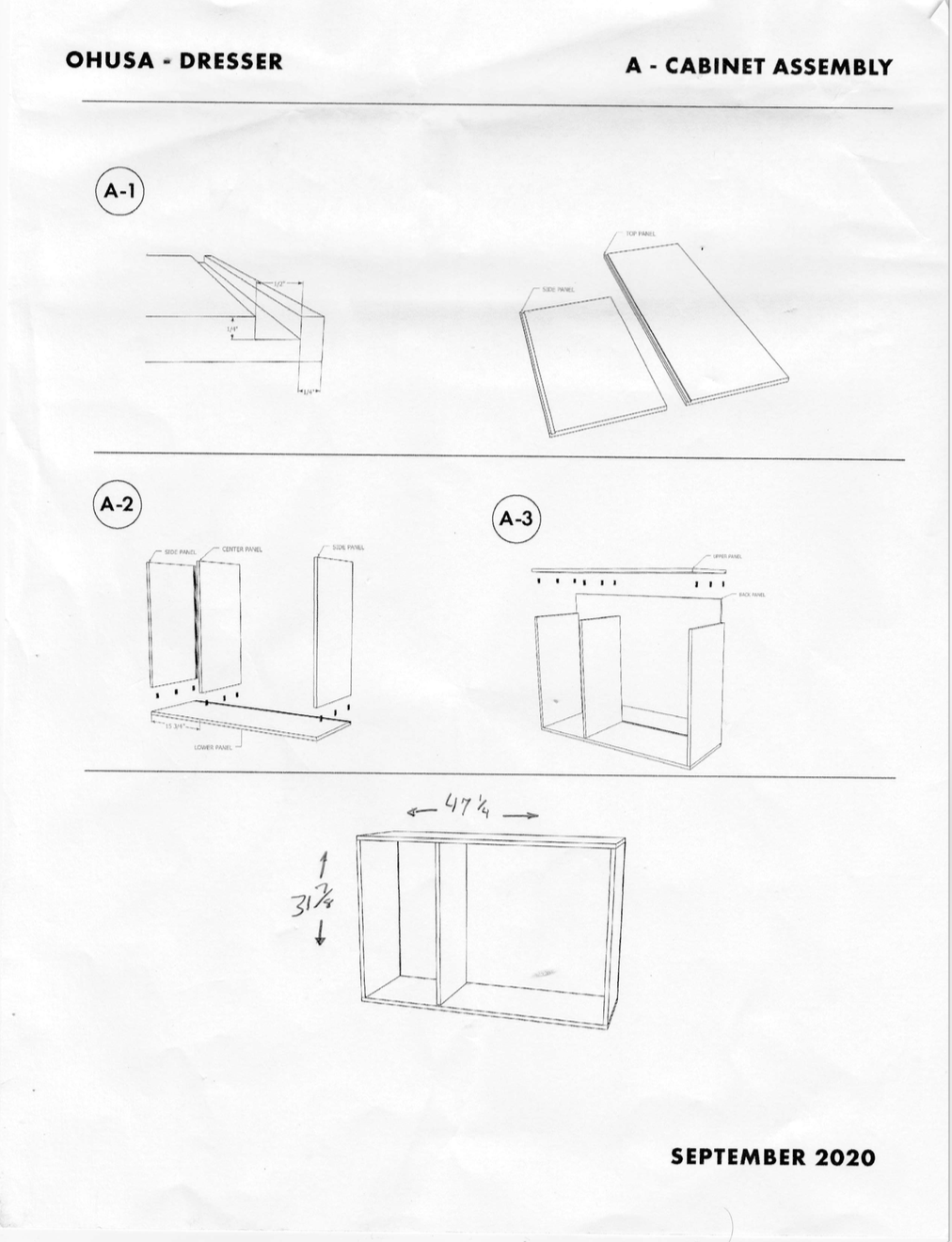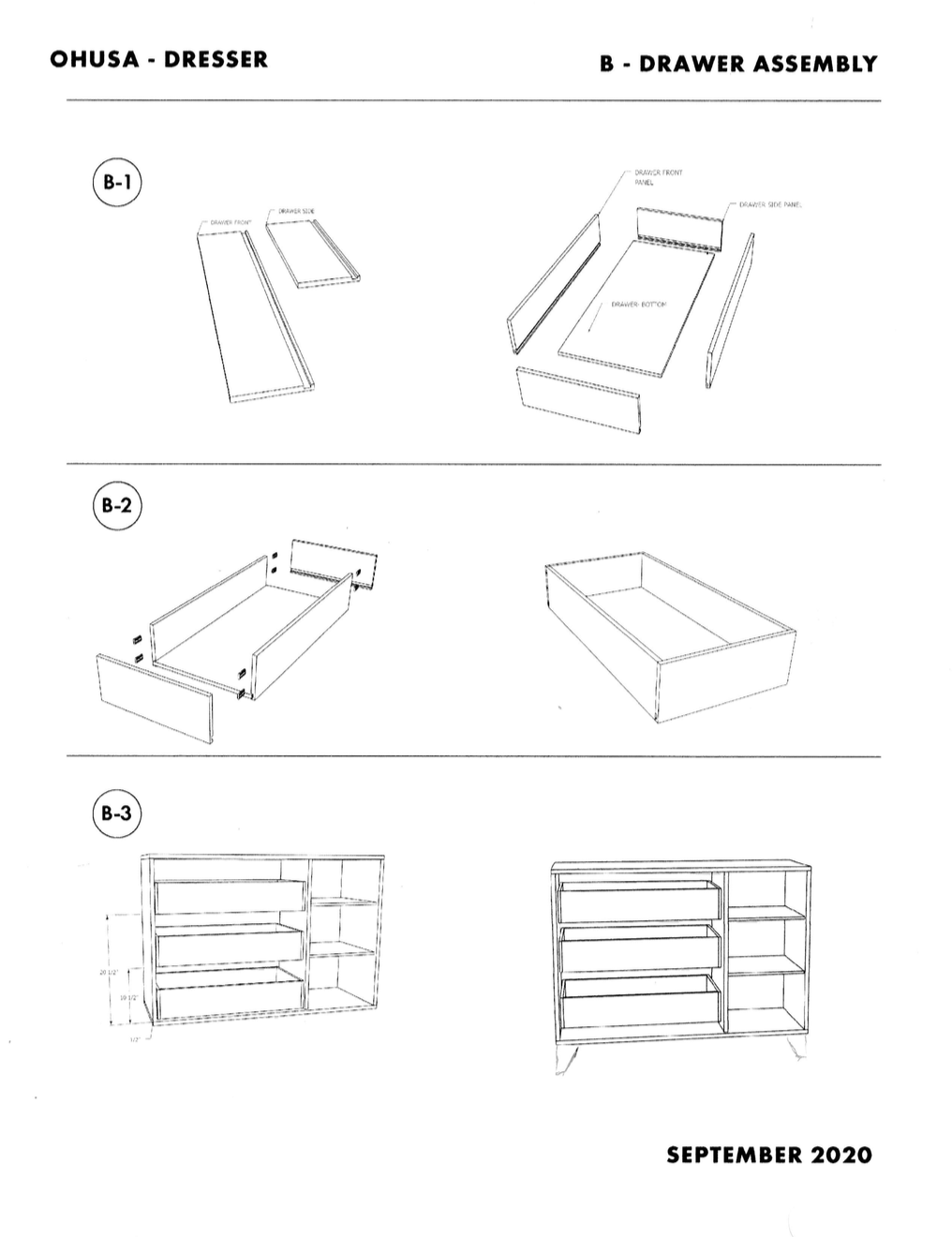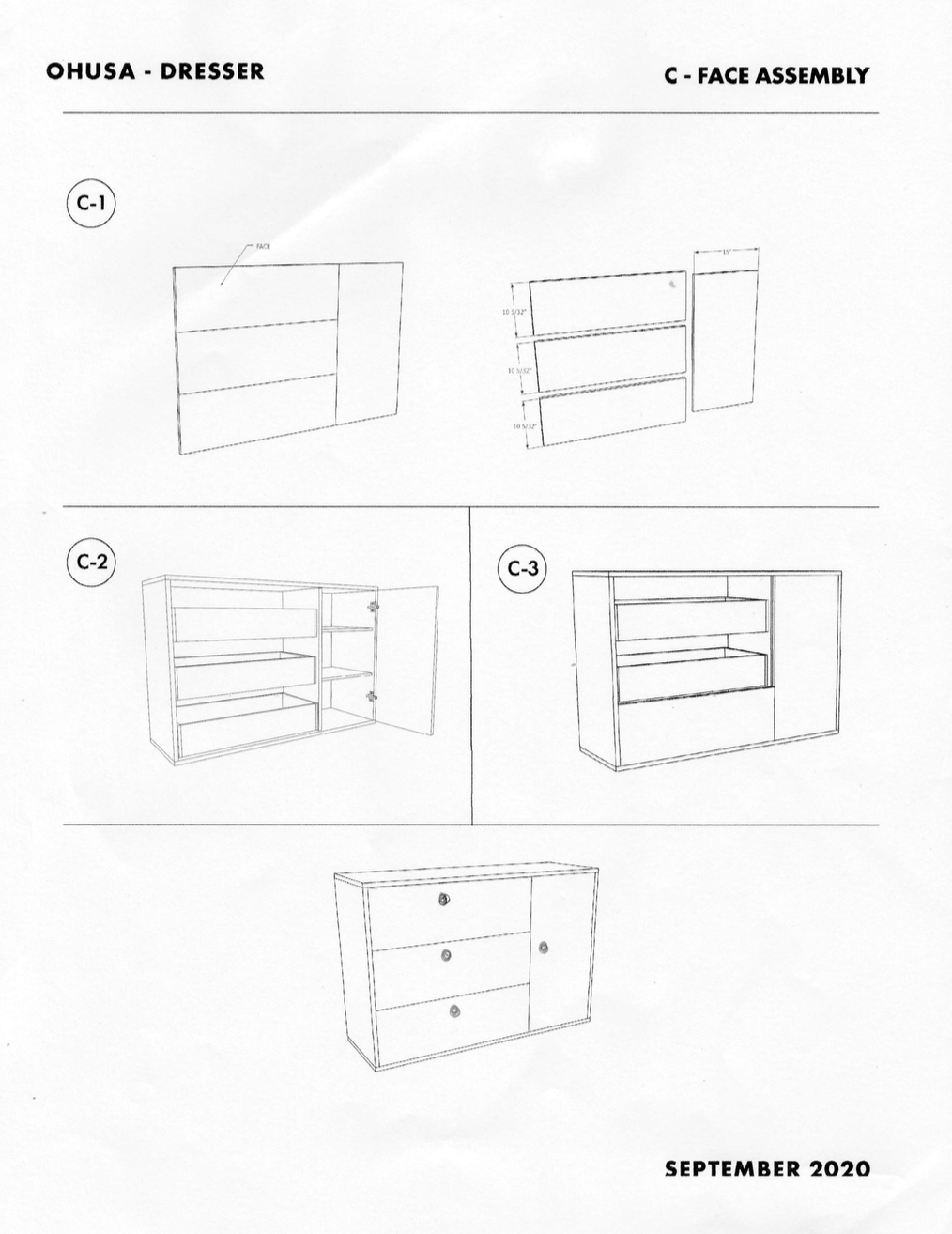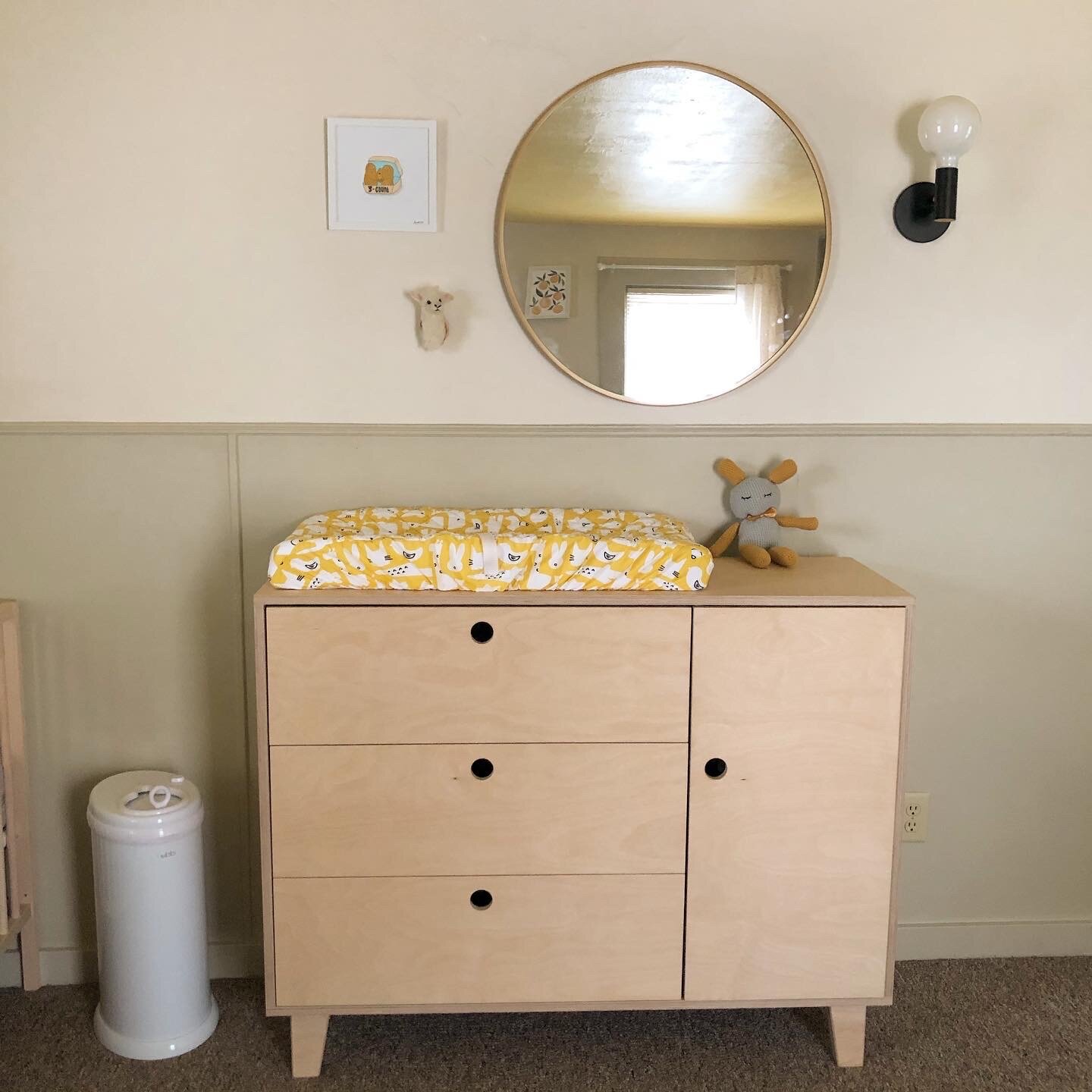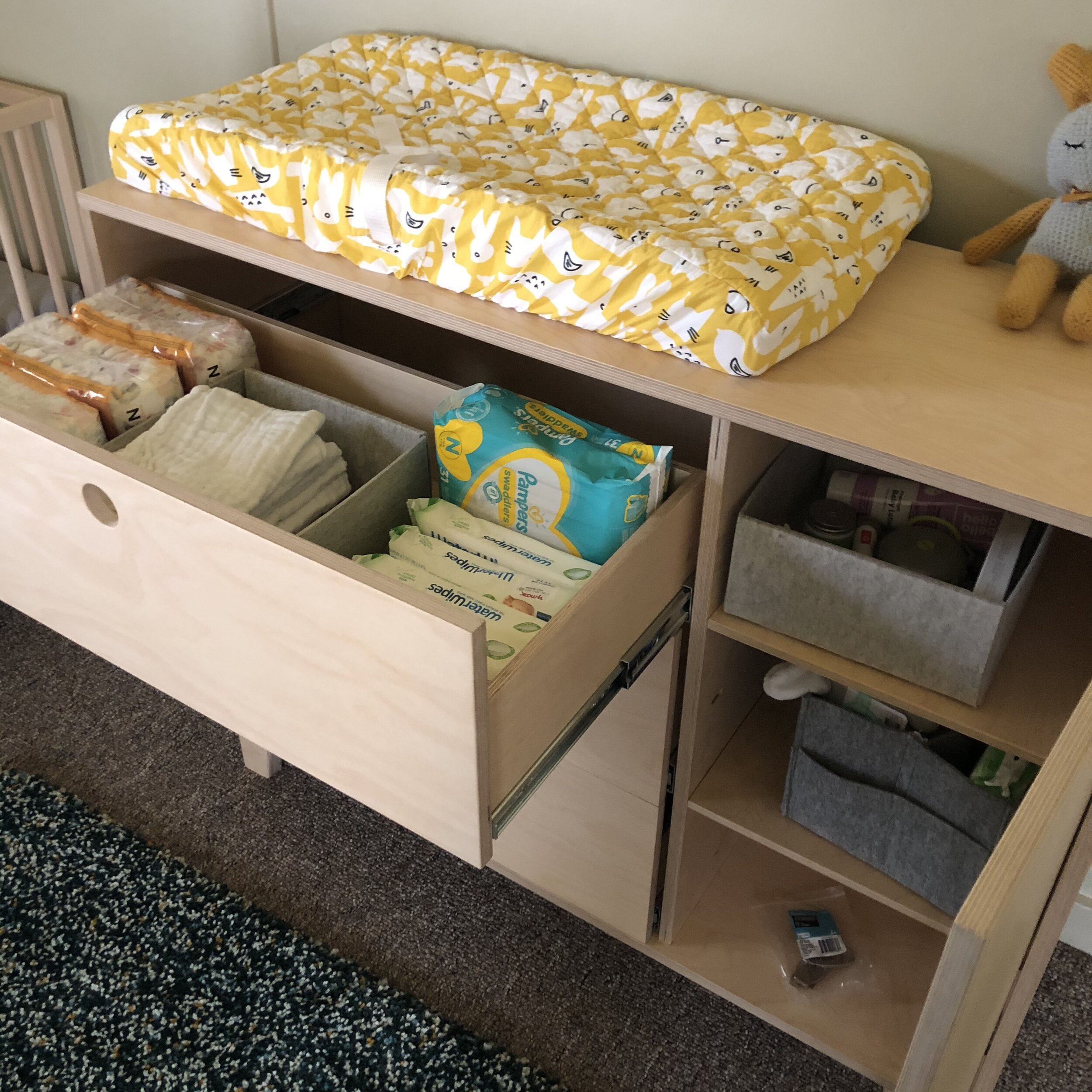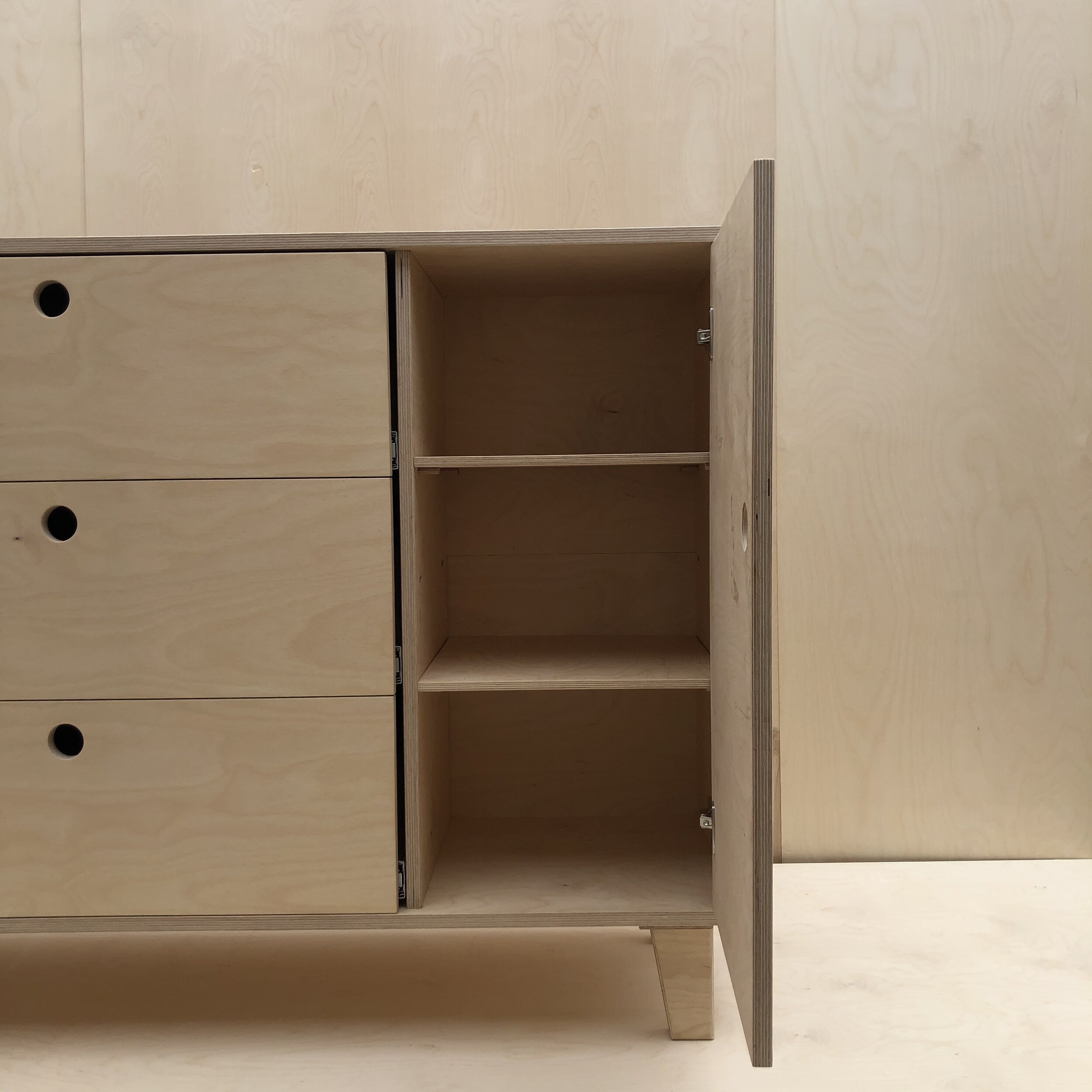Plywood Dresser
Recently, my wife and I turned our home office into a baby nursery for our sweet Abel. It was a project we both were so excited to tackle. Eden, master of colors and enviroment, honed all hues, shapes, and patterns for his room. She has a great sense of space and how to fit furniture cohesiviely, so we worked together on a few furniture concepts to be made for his room.
I think the general assumption for a woodworker is that a baby crib is the magnum opus of your parenthood.. or at least that’s what I deduce from how often I’d get asked if I’d build one. Don’t get me wrong, I’ve seen incredible custom cribs, it’s a high and worthy feat! Cribs, at their best, are little beds for a sweet baby. At its worst it’s a de-assembled obstruction in a storage unit. The decision to build a dresser stemmed from an entire-life standpoint of functionality; he won’t grow out it (maybe just tired of it). Take my word, any furniture store advertising a “baby dresser” must have a marketing team. A dresser is a dresser no matter who uses it or what is in it. This is a piece of furniture that’ll be with him, most likely, till he moves out... then I’d like to have it back! It’s a place where his loving mother will place his carefully curated wardrobe, then his treasured rock and stick collection will find their storing place, and eventually, house his I’ll fitting socks and stained t-shirts that should be thrown away but are just “his favorite”.
A dresser is inherently functional so this wasn’t a hard task to achieve but the primary updates were full extension drawers and a side cabinet with interchangeable shelves. I believe these additions will prove to be helpful for a child who will size out of clothes and hobbies faster than we will even expect (he fully skipped the newborn sized clothing)! From the beginning, I made the decision to limit myself to only two sheets of plywood, one 1/2” and the other 3/4”. The structure and face of the dresser being 3/4” and the drawer assemblies and back panel is 1/2”. Though it took quite a bit of time to orient each piece to the sheets, maximizing material while ending with a fully functional dresser, I ended up very pleased with the yield of material. The depth of the dresser is 16” inches, coincidentally the same width of the diaper changing mat, which allowed me to yield three 16” wide panels from the 48” side of the plywood sheet. The overall height of 36” was determined as a comfortable standing height, similar to a standard kitchen countertop, and the width was 45” as to leave a margin for error on the width of the sheet. Because all lengths of 3/4” ply were less than 48” the orientation of rip cuts were not restricted by the sheet’s dimension. The dimensions of the 3 drawers are 5.5” deep, 31” inches wide, and 14” deep. It feels like a big drawer, at-least enough so it fits clothes for an adult, but not too big that it’ll be a great hiding place for I’ll fitting clothes and single socks.
As much as this project met an immediate need, it none-the-less was a sentimentally weighted project that encouraged me to think deeper into its design and function. During the design process, my wife and I thought a lot about how the dresser will function for our family for the many years it will be used. Will he fill this drawer with weird rocks and sticks he found? Will this cabinet hide the sweaters he hates to wear? Thinking about the end-user, or customer is nothing new for a furniture maker. A furniture maker might think, “They will eat a meal at this table every night!” or “Their favorite books will be on this shelf!”.. outside of this romanticized relationship between the customer and your furniture piece, usually it’s nothing more than a transaction. Reality may just be that the table built always collects clutter and is dressed up in syrup stains. That bookcase happens to exclusively hold the customer's least favorite books. Now, this isn’t the case every time. If you were to make a table for your friend or a bookcase for your mom, the connection is far greater than a transaction, there is sentiment. In the case of this specific project, the user will be my sweet son and the dresser will more than likely be apart of our families life for quite a long time.
My very hope, more than anything, is that this dresser suites my son, holds his clothes, and accommodates his variety of interests. If, and more than likely when, the dresser is drawn on and gets decent scars over the years I will be joyed to know the ‘customer’ used it’s every function.


